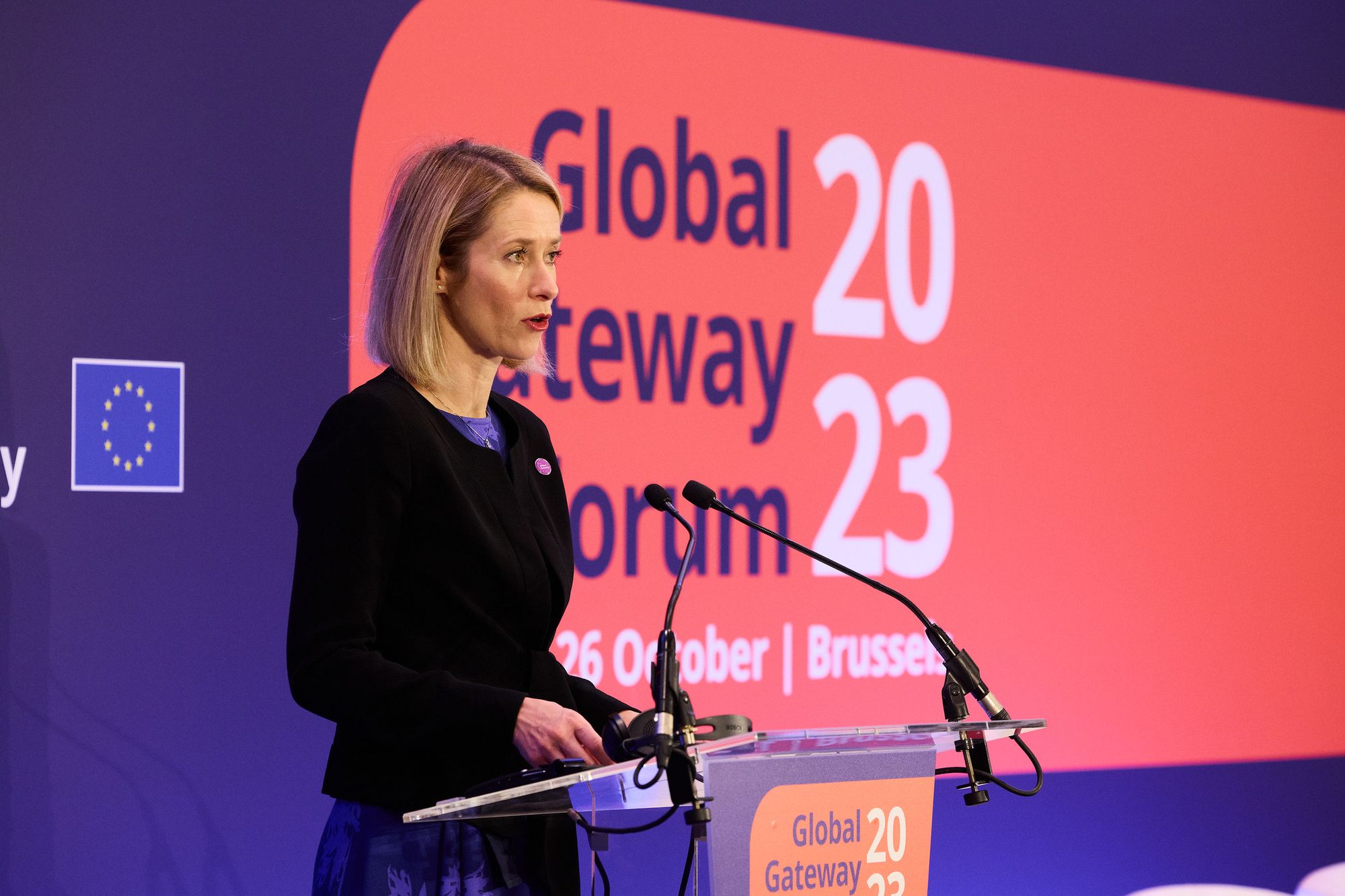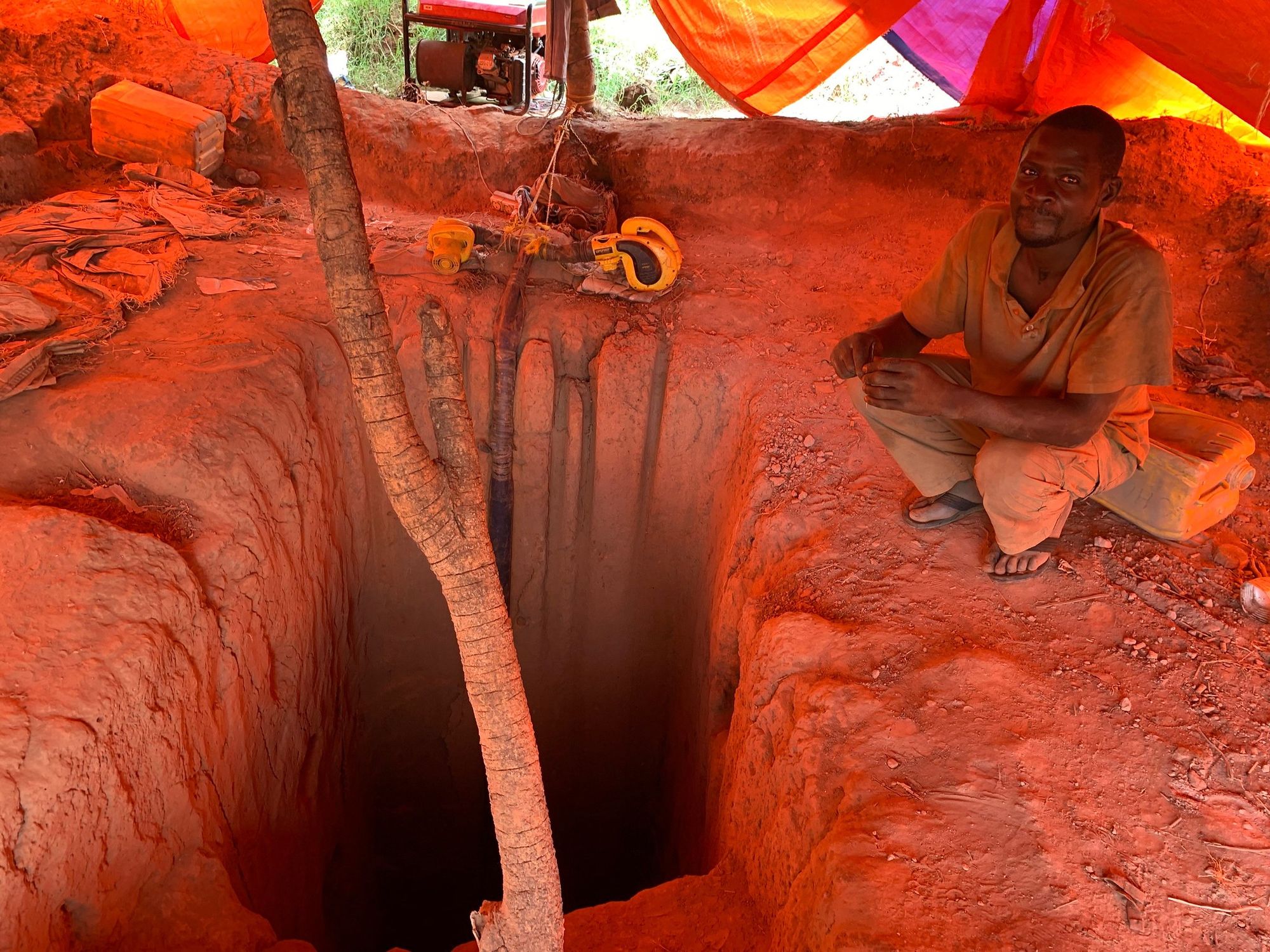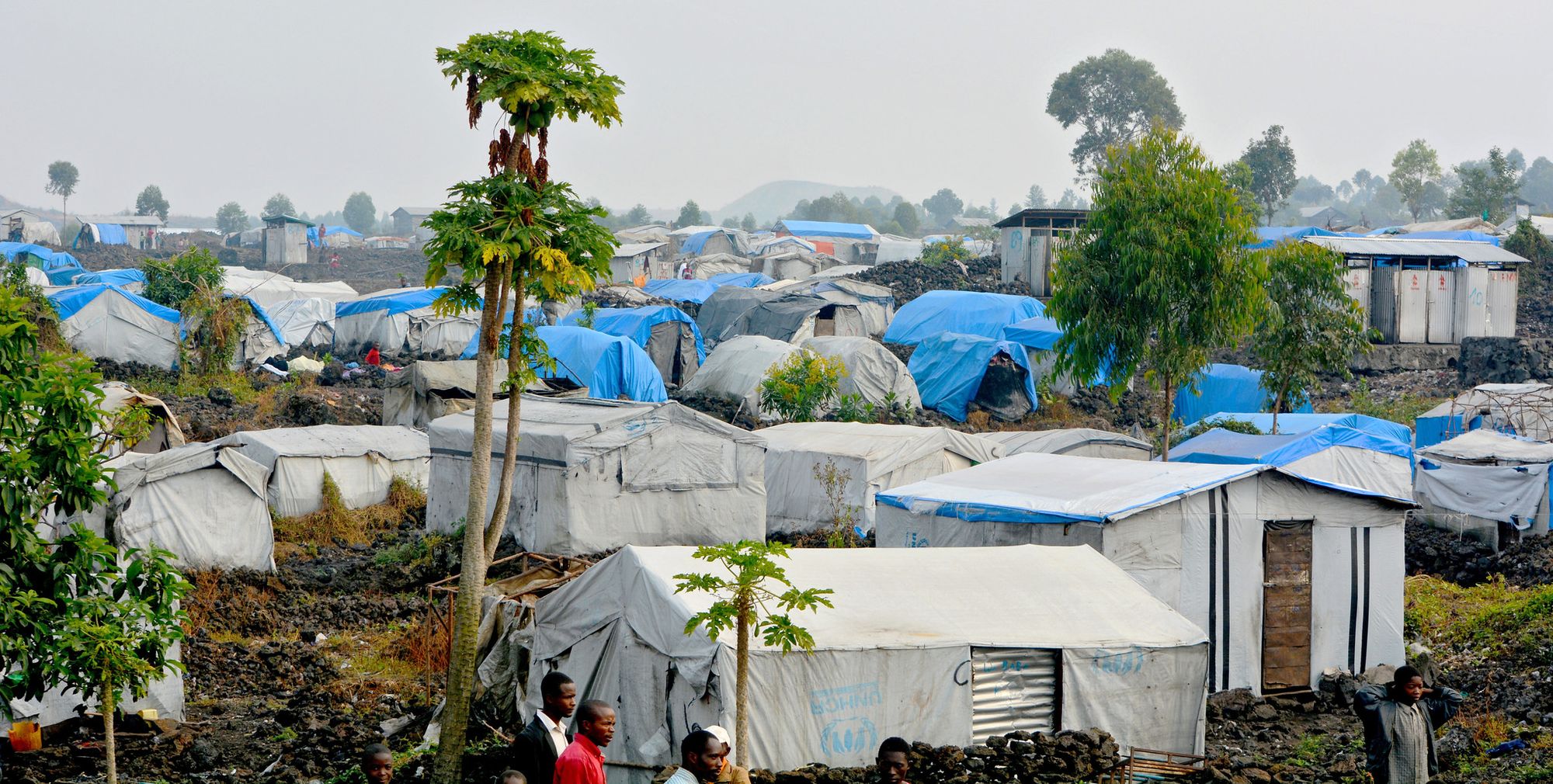Summary by Geopolist | Istanbul Center for Geopolitics:
According to the Harvard International Review article, there will be an increase in demand for important minerals such as lithium, graphite, nickel, and cobalt by 2040 due to the shift towards sustainable energy. The majority of cobalt is produced in the Democratic Republic of the Congo and then undergoes refining in China.
The United States and the European Union have made significant investments in the Lobito Corridor to enhance railway infrastructure, facilitating improved access to cobalt. This is achieved by connecting mines in the Democratic Republic of Congo with ports in Angola, with the ultimate goal of lowering vulnerabilities in the supply chain for cobalt, particularly in relation to the Chinese supply chain. Additionally, this would streamline the transportation of unprocessed resources.
Nevertheless, the process of transporting the mined materials to the refinery is intricate, expensive, and plagued with frequent delays. In order to address these issues, the Lobito Corridor will be utilized to alleviate some of these challenges by offering a more dependable and expedited pathway for cobalt transportation
Read the full article below.
Refining the Lobito Corridor: The Future of Cobalt in Sub-Saharan Africa
By 2040, clean-energy technologies will need 40 times more lithium, 25 times more graphite, and 20 times more nickel and cobalt than in 2020. These metals are essential to the batteries in smartphones and electric vehicles (EV) and the clean energy transition. This critical mineral crisis, which is likely to worsen with climate change, is exacerbated by the metals’ geographic concentrations. Taking cobalt as an example: the Democratic Republic of the Congo (DRC) holds about 80 percent of global reserves, and China controls between 70 and 80 percent of the refined market and at least half of the battery market.
The United States, in addition to the European Union, recently announced its investment in the Lobito Corridor, a sub-Saharan mine-to-port railway. The initiative not only plans to construct 350 miles of railway across Zambia but also upgrade 800 miles of existing rail from the DRC to Angola. The Lobito Corridor aims to improve the West’s cobalt access and limit its reliance on the Chinese supply chain. The railway on its own, however, cannot address these goals.
The journey from mining to refining
Little of the cobalt mined in the DRC is processed domestically or on the continent. Instead, the raw material is shipped to China for refining. The journey between these mining and refining hubs is lengthy and expensive, particularly across the land segment in southern Africa.
The most popular shipping route takes close to one month and involves driving 2,000 miles from the Congolese mining capital of Kolwezi to the Indian Ocean port of Durban, South Africa. At border crossings, the line of mineral-carrying trucks can extend for over 30 miles. Once the raw material reaches Durban, there are often further delays due to shutdowns caused by floods, strikes, social unrest, and the port’s general unreliability. The other common routes are also by road, serving the ports of Walvis Bay, Namibia; Beira, Mozambique; and Dar es Salaam, Tanzania and facing similar duration and cost issues.
Replacing trucks with trains
The Lobito Corridor reduces the travel time, carbon emissions, and costs of traditional routes. It stretches westward from Kolwezi to the Atlantic port of Lobito, Angola, with the border crossing at Luau in northeastern Angola. Not only is the Lobito Corridor less than half the distance to Durban, with each journey only taking eight days, but it makes use of 800 miles of dormant tracks. The route is climate-friendly in two respects: few trees need to be felled given that the tracks already exist and shipping by train rather than truck releases fewer emissions.
Although most of the Lobito Corridor is operational, it requires significant investment to compete with traditional routes. Belgium and Portugal built the tracks, originally known as the Benguela Railway, between 1902 and 1931. They became inactive during the mid-1970s due to damage from the Angolan civil war. When the war ended in 2002, only three percent of the tracks remained operational. Between 2006 and 2014, China financed and completed a US$2 billion restoration of the railway. Currently—and not unsurprisingly given the countries’ relative rates of stability in the twenty-first century—the infrastructure on the Angolan side is in better condition than that of the DRC.
In summer 2023, a consortium named the Lobito Atlantic Railway (LAR)—composed of Swiss commodities trader Trafigura (49.5 percent), Portuguese construction company Mota-Engil (49.5 percent), and Belgian private railway operator Vecturis (one percent)—won a 30-year concession of the tracks, beating out the competing, Chinese-backed bid. LAR will invest US$455 million in Angola and US$100 million in the DRC. It will refurbish the existing tracks, lay around 350 miles of new rail from the Angola-Zambia border at Jimbe to Chingola in the Zambian Copperbelt Province, construct 160 miles of feeder roads, and provide 1,500 wagons and 35 locomotives.
In late 2023, the DRC, Angola, Zambia, United States, European Union, African Development Bank (AfDB), and Africa Finance Corporation (AFC) all signed memoranda of understanding (MOUs) establishing a shared vision for the project. The Lobito Corridor’s total estimated cost is between US$1 billion and US$2.3 billion. The AfDB will contribute around US$500 million, and the United States will invest US$250 million.
The limits of the Lobito Corridor
Although the West is inclined to see the Lobito Corridor as a solution to its lack of critical minerals and dependence on China, the new infrastructure cannot solve these issues on its own. At the most basic level, the Lobito Corridor does not guarantee cobalt access to any country, regardless of investor status. Chinese firms own 15 out of the 19 major mines in the DRC, and the remaining four often sell their raw material to China. The mere existence of a Western-friendly railway with an Atlantic orientation does not directly lead to Western acquisition of the metal.

Moreover, the Lobito Corridor is not the only mine-to-port railway in southern Africa. In February 2024, China revealed its plan to invest over US$1 billion in a rival set of tracks, the Tazara Railway, running eastward from the Zambian copper mines to the Indian Ocean port of Dar es Salaam. According to the Chinese ambassador to Zambia, the investment will be spread out over the “coming years.” Considering China’s extensive experience in infrastructure development, especially through the Belt and Road Initiative (BRI), it is not improbable that the Tazara Railway upgrade will be complete before that of the Lobito Corridor.
Even if construction on the Lobito Corridor finishes first, the project does not counter Chinese control over cobalt and the battery market. In fact, China stands to significantly benefit from the Lobito Corridor. As LAR will not allow a monopoly to develop over the railway, both Western and Chinese firms will be able to use it. Chinese companies may actually prefer the Lobito Corridor, despite its position on the Atlantic, over the Durban route for its efficiency.
Three Chinese state-owned enterprises will directly profit from the success of the railway. China Communications Construction Co. holds a 32.4 percent stake in Mota-Engil, one of the firms in the joint venture. Furthermore, LAR’s concession applies only to the railway, not to the Port of Lobito itself. Two Chinese firms won the public tender for the port in 2022 and now hold the rights to operate it for 20 years.
Refining at the local level
The limits of the Lobito Corridor do not make it pointless. At the same time, its basic principle—exporting raw material from least developed countries (LDCs) for value-added processing—is exploitative and outdated. By shipping materials in their least-valuable states, mineral-rich countries fail to reap the monetary benefit of the industry, despite being its foundation. Not only does this dynamic parallel colonial practices—which the Zambian Minister of Mines and Minerals acknowledged as a new “scramble for Africa”—but also does not correspond with the intentions of the Congolese and Zambian governments.
The DRC and Zambia previously expressed their desires to develop local refining capabilities. Both agree that the first step would be to create a special economic zone, in which raw ore would be turned into preliminary products for batteries. The United States and European Union each signed MOUs supporting sub-Saharan development of raw material value chains. No concrete steps, however, have been taken concerning the documents, which were signed December 2022 in Washington and October 2023 in Brussels. If these good intentions never advance beyond the MOU stage, they are worth as much as “toilet paper.” China’s comparative progress, like committing US$1.4 billion to a lithium-processing plant in Zimbabwe, underscores this reality.

A win-win-win
Developing local refining makes sense for sub-Saharan Africa, the West, and global climate objectives. Neither region currently possesses the required processing technology, and the cost of building a plant in the DRC is a third of an equivalent installation in the United States or China. Additionally, a plant using sub-Saharan hydroelectric power would reduce emissions by 30 percent compared to present processing. Refining locally would also decrease the emissions of products destined for the European market by bypassing the step of shipping minerals to China for processing.
Though the DRC’s soil contains approximately 80 percent of the world’s cobalt, the country only holds three percent of the battery and EV value chain. Previous mining deals have shorted the country. The infamous 2008 Sino-Congolese cobalt and copper extraction deal, known as the Sicomines pact, granted China rights to copper and cobalt mines in the DRC; in return, China would invest in Congolese infrastructure. However, the DRC’s national auditor found that the deal significantly undervalued the mines, with the Chinese owing an additional US$17 billion in infrastructure investments.
Southern Africa stands to make substantially higher profits from exporting semi-finished, such as battery cathode precursor materials, or finished products. Raw materials account for the greatest expense in refining. In an NMC 622 cathode chemistry precursor plant for instance, raw cobalt, manganese, and nickel make up 85 percent of the total cost of operation. While the DRC does not have enough manganese and nickel on its own, these materials could be sourced from neighboring countries—such as Tanzania, Zimbabwe, Madagascar, and Mozambique—supporting regional integration.

Investing locally would achieve the West’s priorities of diversifying its critical mineral supply and combating Chinese influence. While sub-Saharan processing would not lead to complete autonomy, Western dependence on Chinese battery supply chains is caused at least as much by its reliance on Chinese cobalt refining as on actual manufacturing. This kind of value-adding investment, rather than infrastructure aimed at exporting the continent’s natural resources, could lay the foundation for a more holistic relationship between the West and sub-Saharan Africa.
The realities of developing refining in sub-Saharan Africa
The numerous potential benefits of sub-Saharan processing do not negate its challenges. Building one plant would take approximately two years and US$39 million (2021 US dollars) and 12 years to recoup the investment. It would also require upgrading existing infrastructure, like transportation for raw materials and processed products—a role that the Lobito Corridor could fill—and more reliable electricity. Specialized workers and effective governance of plants are essential to the success of the industry. Given the cost and scope of these needs, making sub-Saharan refining a reality necessitates at least a regional effort, something the West could support in conjunction with the Lobito Corridor.
The DRC’s precarious domestic situation could also threaten the industry. Sustained violence between armed groups and the military in the eastern regions has resulted in approximately six million deaths since 1996 and a current total of 7.1 million internally displaced persons (IDPs). The country lacks consistent, democratic elections; freedom of the press; and an independent judicial system. In addition, the mines’ human rights records are egregious, which local processing could exacerbate. While other sub-Saharan countries can still suffer from social unrest and corruption, they may serve as a more secure choice for the location of plants.

Despite these challenges, progress is already underway. In October 2023, Luxembourg’s Eurasian Resources Group broke ground on a US$800 million hydrometallurgical plant at its COMIDE mine in the DRC, with the goal of producing copper and cobalt by the end of 2025. Advancements in local processing are not confined to foreign mining giants. Congolese company Buenassa, with support from the government and US financial consulting firm Delphos International, plans to construct a US$350 million copper-cobalt smelter. In February 2024, the AFC signed an expression of interest in financing Zambian Kobaloni Energy’s US$100 million facility. By the end of next year, there could be several active sub-Saharan refineries.
An opportune moment
Interest from countries besides China in sub-Saharan critical minerals comes at an opportune moment. After more than a decade of BRI, Chinese lending and imports from Africa are declining, creating space for other partners. However, the Lobito Corridor on its own will not achieve the West’s objectives of securing a reliable cobalt supply and reducing its dependence on China. Reaching these goals requires not just refurbishing the Lobito Corridor but persuading local mines to choose Western companies, which could be attained by investing in sub-Saharan refining.
Source: Harvard International Review
Cover photo shows Angolan Minister of Transport Ricardo Viegas de Abreu and US Agency for International Development (USAID) Administrator Samantha Power walking next to a train at Benguela Railway Station. Photo by USAID and licensed under CC BY-NC 2.0.







